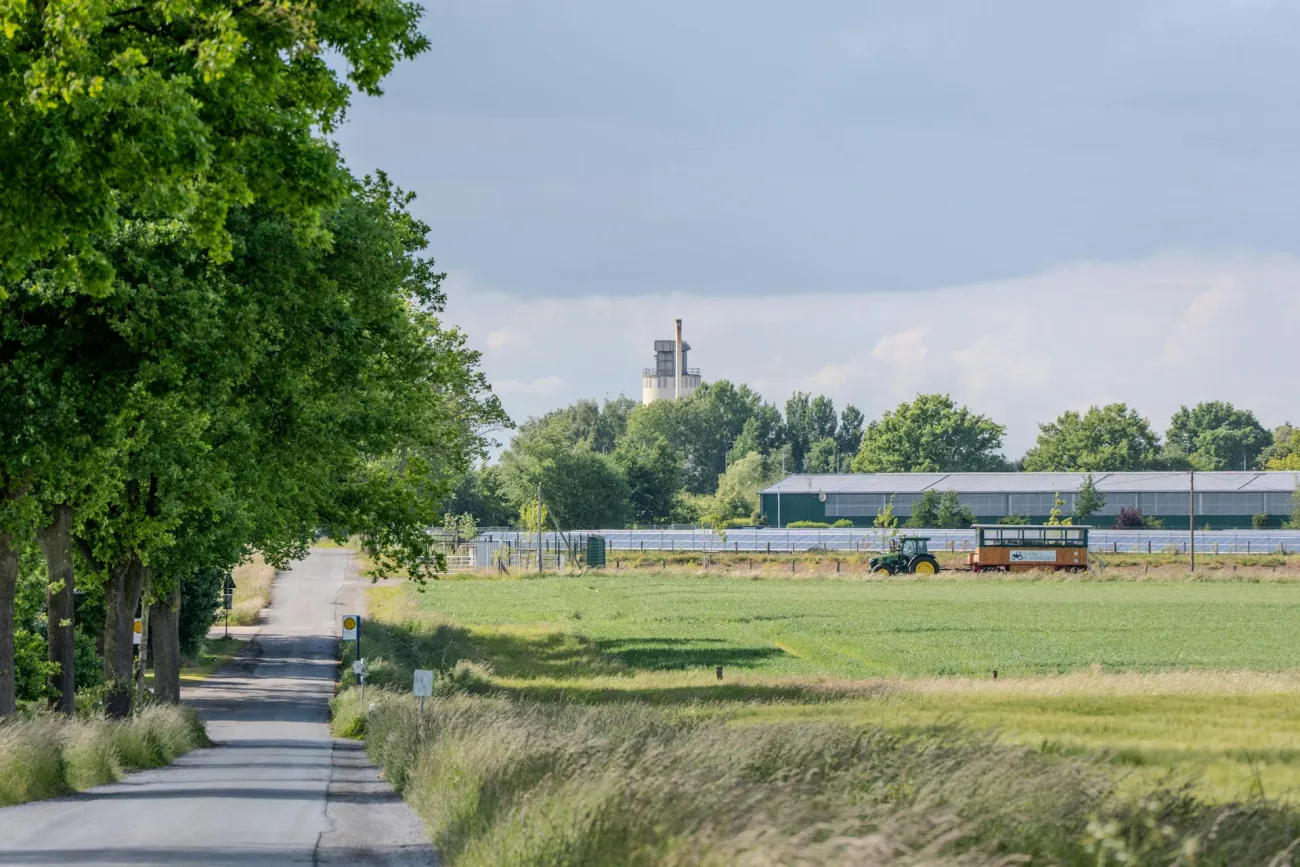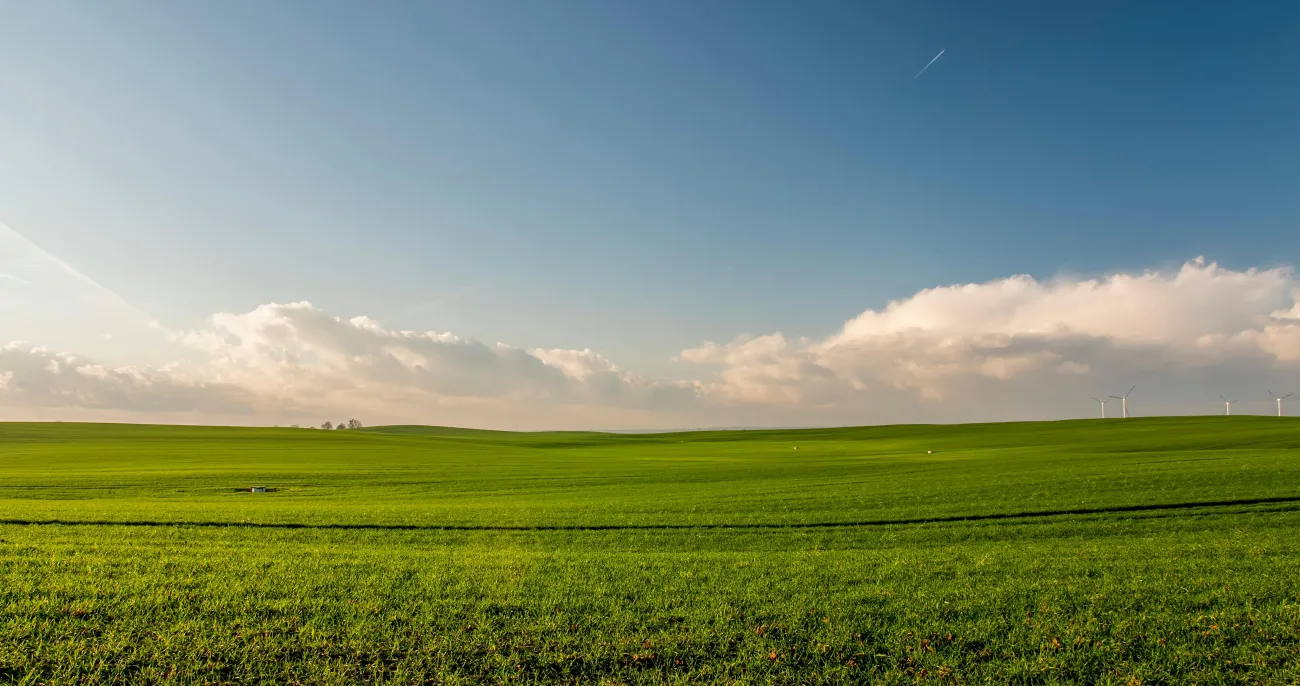Dr Abigail Muscat works at Wageningen University and Research, where she completed her PhD assessing the roles of science and policy in addressing trade-offs between different uses of biomass (e.g. food vs feed). at the Animal Production Systems group. She is passionate about transforming food systems so that they are healthy, equitable and sustainable for all.

Image: cocoparisienne, Fog moor swampy landscape, Pixabay, Pixabay Licence
What are marginal lands and (how) should we use them?
Using marginal lands is often proposed by scientists and policy-makers to resolve a wide array of agricultural, climate and environmental challenges, such as competition for land between food, feed and bioenergy crops.
However, there is no agreement about what ‘marginal lands’ actually are. Definitions are diverse and broad. Marginal lands have been defined in various ways, including as land unsuitable for food production, as lower quality land and as economically marginal land (Shortall, 2013).
There is also no agreement on the best uses of marginal lands or whether they should be used at all. Many argue that marginal lands offer one way of avoiding food-fuel competition by planting bioenergy crops on land unsuitable for food production (Muscat et al., 2020). This could offset the negative social and environmental effects of bioenergy, such as the displacement of food production, increased greenhouse gas emissions from land-use change and higher food prices.
However, others point out that if these lands are already unproductive for food, it will take considerable resources to make fuel crops on these lands economically viable and sustainable (Bryngelsson and Lindgren, 2013). Furthermore, some argue that marginal grasslands should instead be used to provide ‘low-cost’ livestock feed to replace feed crops that compete with food for humans because they are grown on productive arable land. (See TABLE explainer What is feed-food competition?) Livestock could freely graze on marginal grasslands that could not support arable production, turning inedible biomass into food.
Marginal lands could also help fight climate change and stem biodiversity loss through rewilding and ecosystem restoration. One study (Friedlingstein et al., 2019) estimates that converting 6.6 million square miles of one kind of marginal land, namely degraded land, to forest would store around 200 Gigatons of carbon or roughly 25% of the current atmospheric carbon pool. Critics however have pointed out that marginal lands may be communal lands that are already used by pastoralists, smallholders and indigenous peoples – and hence not necessarily available for ambitious reforestation programmes.
Defining marginal lands is difficult and value-laden
Given the myriad number of definitions, it is important to define marginal lands so that we can map these lands effectively and use them safely and sustainably. While multiple projects, reports and scientific papers have already attempted this, the concept remains as contested as before.
This partly has to do with the complexity of the issues. For example, proponents argue that using marginal lands will avoid additional emissions from indirect land use change, by reducing the displacement of food production that might occur if biofuel (say) were grown on arable land. However, testing whether this hypothesis is true is notoriously difficult as it would entail predicting changes at wide geographical and temporal scales, by looking at how local land-use decision-makers may respond to global market forces.
The many framings around marginal land do not just emerge out of the complexity of modelling the interactions between social and natural systems, but also from normative stances of what constitutes ‘marginality’. What is marginal land for some, is productive land for others. Particularly for communal lands, land may be protected for reasons that have little to do with agricultural productivity, such as medicinal use, building materials or sacred rites. In this sense, the wide range of framings cannot be captured by better models, definitions, or maps, not just because complexity may be inherent and likely irreducible, but also because these better definitions might fail to recognise the normative position that they are implicitly adopting.
Understandings of marginal lands impact application of science and policy
The attempt to come to a definite understanding of marginal lands reflects confusion between the various frames or narratives surrounding marginal lands. Particularly when normative stances are not made clear at the outset, the role of science in policy-making can become confused.
The standard linear model of the science-policy relationships tells us that policy reacts to the problems that science presents. In reality, however, ambiguous concepts in policy, such as sustainability, circular economy or marginal lands, end up being ‘solutions that chase problems’ (Kovacic et al., 2019: pg. 54). In other words, the why (should we use marginal lands), the what (goals to be achieved through marginal lands), and the how (which policy solutions are needed to achieve these goals) are jumbled up. If marginal lands are proposed to solve land-use competition between bioenergy and food production, other ‘problems’ are piled on top in an attempt to create ‘win-win’ situations.
One example from my research is when EU forestry managers advocated the use of forest bioenergy from marginal lands as a solution to a whole range of problems – biodiversity loss, forest fires, loss of rural incomes – to the extent that the original point of it being a climate solution that minimises emissions from indirect land use change was largely lost (Muscat et al., 2021). This seems to be common in some policy domains, particularly those of climate and bioenergy where targets are set and justification is sought later. As Skogstad and Wilder remark, ambiguity may be used to create ‘opportunities for institutional agenda-setters to build coalitions in support of biofuel mandates/targets’ (Skogstad and Wilder, 2019).
The ambiguity around the definition of marginal land is furthermore seen by policy-makers, funders and researchers as a problem that needs to be solved. Often there is no unique or complete understanding of what exactly is to be managed: bioenergy and land-use change, or biodiversity or food-feed competition? However, the ambiguity emerges from different ways of framing the problem, (e.g. “the problem is land-use change” or “the problem is biodiversity loss”) and different ways of framing the solution (e.g. “the solution is bioenergy plantations on marginal land”, “the solution is ecosystem restoration of marginal lands”).
Are marginal lands really surplus lands?
Though marginal lands are sometimes framed as a ‘free’ resource that lets us side-step conflicts over land use, the debates remain largely the same as for so-called productive lands. In other words, debates on whether land should be used for ecosystem restoration, for food, for animal feed or for bioenergy can just as easily be applied to marginal lands as to so-called productive lands. Marginal land is therefore not ‘free for use’ or ‘surplus’ land that avoids these conflicts over land-use. Marginal land would be better treated as a resource (like productive land) that requires careful management as appropriate to the local context.
The concept of “marginal lands” still has value to policymakers, if treated suitably
Does the inevitable ambiguity around marginal lands mean that it is useless as a concept? Not necessarily. Firstly, there may genuinely be lands that can avoid issues of competition for land or are ideal for rewilding. However, the concept of marginal lands should not be used as a panacea to escape from tricky, politically fraught discussions about land-use. The hard work of politics still needs to be done, no matter the accuracy of estimations or more robust definitions of marginal lands.
The way to deal with this challenge is to make sure that multiple narratives around marginal lands form part of the political process. This means making normative stances explicit at the outset and embedding them in deliberative discussions. Policy solutions will be nuanced and locally adapted. For example, farming on marginal land could protect traditional ways of farming in some areas at risk of land abandonment, such as Castro Laboreiro in Portugal which has a rich history of traditional farming and is an important site for cultural heritage. In other areas it might make more sense to encourage rewilding (van der Zanden et al., 2018).

Image: vjgalaxy, Castro Laboreiro Portugal, Pixabay, Pixabay Licence
On a practical level, it can mean reflexive and equitable methodological approaches (Kovacic et al., 2019; Voelker et al., 2019), particularly ones that reflect uncertainty, such as the NUSAP system (notational system for the management and communication of uncertainty in science for policy) that helps communicate uncertainty and risk (Van Der Sluijs et al., 2005). Another example is Quantitative Story-Telling (Cadillo-Benalcazar et al., 2020; Saltelli and Giampietro, 2017), an approach where different frames or narratives are presented, along with associated measurements, rather than a singular way of looking at the problem. This means when the scientific knowledge base cannot be resolved to come to a singular answer, science ought to embrace complexity and work with multiple framings of a problem rather than risk oversimplifying it (Stirling, 2010).
Defining marginal lands is notoriously difficult and value-laden when different food system actors attempt to claim these lands for radically different purposes. Ironically, despite being largely claimed as a solution to avoid land-use conflicts due to its ‘uselessness’, marginal land proves to be a valuable resource itself that mirrors land-use debates for productive land. The hard work of politics cannot be avoided merely by trying to come up with better definitions but requires fairly involving all food-system actors and adapting solutions to the local context.
References
Bryngelsson, D.K., Lindgren, K., 2013. Why large-scale bioenergy production on marginal land is unfeasible: A conceptual partial equilibrium analysis. Energy Policy 55, 454–466. https://doi.org/10.1016/j.enpol.2012.12.036
Cadillo-Benalcazar, J.J., Bukkens, S.G.F., Ripa, M., Giampietro, M., 2020. Why does the European Union produce biofuels? Examining consistency and plausibility in prevailing narratives with quantitative storytelling. Energy Res. Soc. Sci. 71, 101810. https://doi.org/10.1016/j.erss.2020.101810
Friedlingstein, P., Allen, M., Canadell, J.G., Peters, G.P., Seneviratne, S.I., 2019. Comment on “The global tree restoration potential.” Science (80-. ). 366, 76–79. https://doi.org/10.1126/science.aay8060
Kovacic, Z., Strand, R., Völker, T., 2019. The circular economy in Europe: Critical perspectives on policies and imaginaries, The Circular Economy in Europe: Critical Perspectives on Policies and Imaginaries. Routledge, New York : Routledge, 2020. | Series: Routledge explorations in sustainability and governance. https://doi.org/10.4324/9780429061028
Muscat, A., de Olde, E.M., Candel, J.J.L., de Boer, I.J.M., Ripoll-Bosch, R., 2021. The Promised Land: Contrasting frames of marginal land in the European Union. Land use policy 112, 105860. https://doi.org/10.1016/j.landusepol.2021.105860
Muscat, A., de Olde, E.M., de Boer, I.J.M., Ripoll-Bosch, R., 2020. The battle for biomass: A systematic review of food-feed-fuel competition. Glob. Food Sec. 25, 100330. https://doi.org/10.1016/j.gfs.2019.100330
Saltelli, A., Giampietro, M., 2017. What is wrong with evidence based policy, and how can it be improved? Futures 91, 62–71. https://doi.org/10.1016/j.futures.2016.11.012
Shortall, O.K., 2013. “Marginal land” for energy crops: Exploring definitions and embedded assumptions. Energy Policy 62, 19–27. https://doi.org/10.1016/j.enpol.2013.07.048
Skogstad, G., Wilder, M., 2019. Strangers at the gate: the role of multidimensional ideas, policy anomalies and institutional gatekeepers in biofuel policy developments in the USA and European Union. Policy Sci. 52, 343–366. https://doi.org/10.1007/s11077-019-09351-5
Stirling, A., 2010. Keep it complex. Nature 468, 1029–1031. https://doi.org/10.1038/4681029a
Van Der Sluijs, J.P., Craye, M., Funtowicz, S., Kloprogge, P., Ravetz, J., Risbey, J., 2005. Combining quantitative and qualitative measures of uncertainty in model-based environmental assessment: The NUSAP system. Risk Anal. 25, 481–492. https://doi.org/10.1111/j.1539-6924.2005.00604.x
van der Zanden, E.H., Carvalho-Ribeiro, S.M., Verburg, P.H., 2018. Abandonment landscapes: user attitudes, alternative futures and land management in Castro Laboreiro, Portugal. Reg. Environ. Chang. 18, 1509–1520. https://doi.org/10.1007/s10113-018-1294-x
Voelker, T., Blackstock, K., Kovacic, Z., Sindt, J., Strand, R., Waylen, K., 2019. The role of metrics in the governance of the water-energy-food nexus within the European Commission. J. Rural Stud. 1–9. https://doi.org/10.1016/j.jrurstud.2019.08.001




Comments (0)